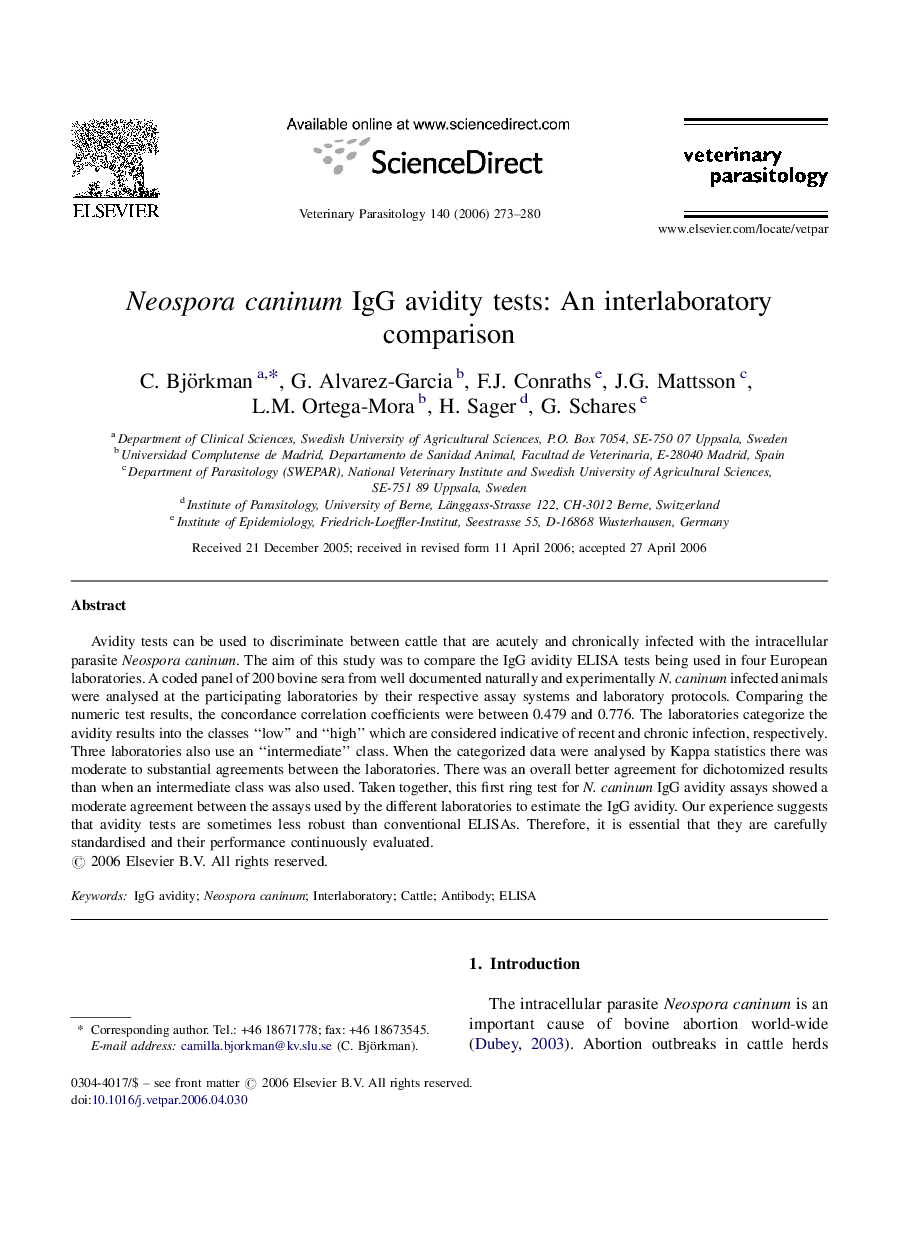| Article ID | Journal | Published Year | Pages | File Type |
|---|---|---|---|---|
| 2472403 | Veterinary Parasitology | 2006 | 8 Pages |
Avidity tests can be used to discriminate between cattle that are acutely and chronically infected with the intracellular parasite Neospora caninum. The aim of this study was to compare the IgG avidity ELISA tests being used in four European laboratories. A coded panel of 200 bovine sera from well documented naturally and experimentally N. caninum infected animals were analysed at the participating laboratories by their respective assay systems and laboratory protocols. Comparing the numeric test results, the concordance correlation coefficients were between 0.479 and 0.776. The laboratories categorize the avidity results into the classes “low” and “high” which are considered indicative of recent and chronic infection, respectively. Three laboratories also use an “intermediate” class. When the categorized data were analysed by Kappa statistics there was moderate to substantial agreements between the laboratories. There was an overall better agreement for dichotomized results than when an intermediate class was also used. Taken together, this first ring test for N. caninum IgG avidity assays showed a moderate agreement between the assays used by the different laboratories to estimate the IgG avidity. Our experience suggests that avidity tests are sometimes less robust than conventional ELISAs. Therefore, it is essential that they are carefully standardised and their performance continuously evaluated.
